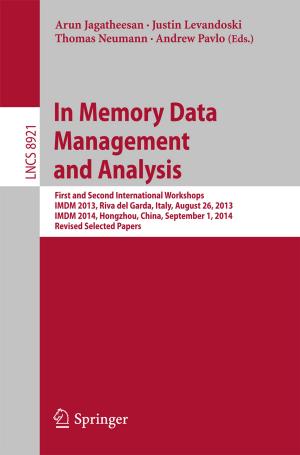Partial Least Squares Structural Equation Modeling
Recent Advances in Banking and Finance
Business & Finance, Management & Leadership, Operations Research, Industries & Professions, Insurance| Author: | ISBN: | 9783319716916 | |
| Publisher: | Springer International Publishing | Publication: | February 16, 2018 |
| Imprint: | Springer | Language: | English |
| Author: | |
| ISBN: | 9783319716916 |
| Publisher: | Springer International Publishing |
| Publication: | February 16, 2018 |
| Imprint: | Springer |
| Language: | English |
This book pulls together robust practices in Partial Least Squares Structural Equation Modeling (PLS-SEM) from other disciplines and shows how they can be used in the area of Banking and Finance. In terms of empirical analysis techniques, Banking and Finance is a conservative discipline. As such, this book will raise awareness of the potential of PLS-SEM for application in various contexts. PLS-SEM is a non-parametric approach designed to maximize explained variance in latent constructs. Latent constructs are directly unobservable phenomena such as customer service quality and managerial competence. Explained variance refers to the extent we can predict, say, customer service quality, by examining other theoretically related latent constructs such as conduct of staff and communication skills.
Examples of latent constructs at the microeconomic level include customer service quality, managerial effectiveness, perception of market leadership, etc.; macroeconomic-level latent constructs would be found in contagion of systemic risk from one financial sector to another, herd behavior among fund managers, risk tolerance in financial markets, etc. Behavioral Finance is bound to provide a wealth of opportunities for applying PLS-SEM. The book is designed to expose robust processes in application of PLS-SEM, including use of various software packages and codes, including R.
PLS-SEM is already a popular tool in marketing and management information systems used to explain latent constructs. Until now, PLS-SEM has not enjoyed a wide acceptance in Banking and Finance. Based on recent research developments, this book represents the first collection of PLS-SEM applications in Banking and Finance. This book will serve as a reference book for those researchers keen on adopting PLS-SEM to explain latent constructs in Banking and Finance.
This book pulls together robust practices in Partial Least Squares Structural Equation Modeling (PLS-SEM) from other disciplines and shows how they can be used in the area of Banking and Finance. In terms of empirical analysis techniques, Banking and Finance is a conservative discipline. As such, this book will raise awareness of the potential of PLS-SEM for application in various contexts. PLS-SEM is a non-parametric approach designed to maximize explained variance in latent constructs. Latent constructs are directly unobservable phenomena such as customer service quality and managerial competence. Explained variance refers to the extent we can predict, say, customer service quality, by examining other theoretically related latent constructs such as conduct of staff and communication skills.
Examples of latent constructs at the microeconomic level include customer service quality, managerial effectiveness, perception of market leadership, etc.; macroeconomic-level latent constructs would be found in contagion of systemic risk from one financial sector to another, herd behavior among fund managers, risk tolerance in financial markets, etc. Behavioral Finance is bound to provide a wealth of opportunities for applying PLS-SEM. The book is designed to expose robust processes in application of PLS-SEM, including use of various software packages and codes, including R.
PLS-SEM is already a popular tool in marketing and management information systems used to explain latent constructs. Until now, PLS-SEM has not enjoyed a wide acceptance in Banking and Finance. Based on recent research developments, this book represents the first collection of PLS-SEM applications in Banking and Finance. This book will serve as a reference book for those researchers keen on adopting PLS-SEM to explain latent constructs in Banking and Finance.















